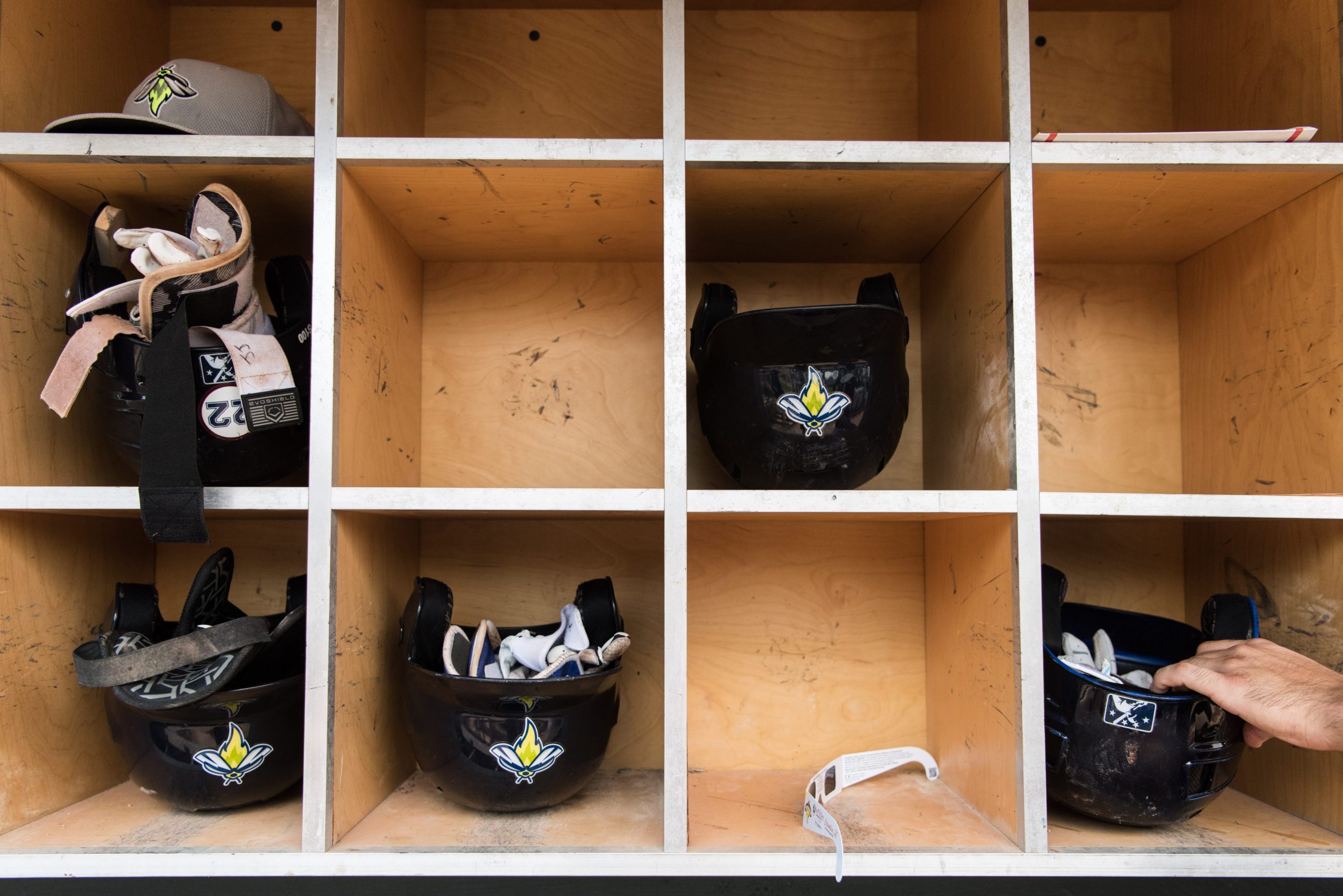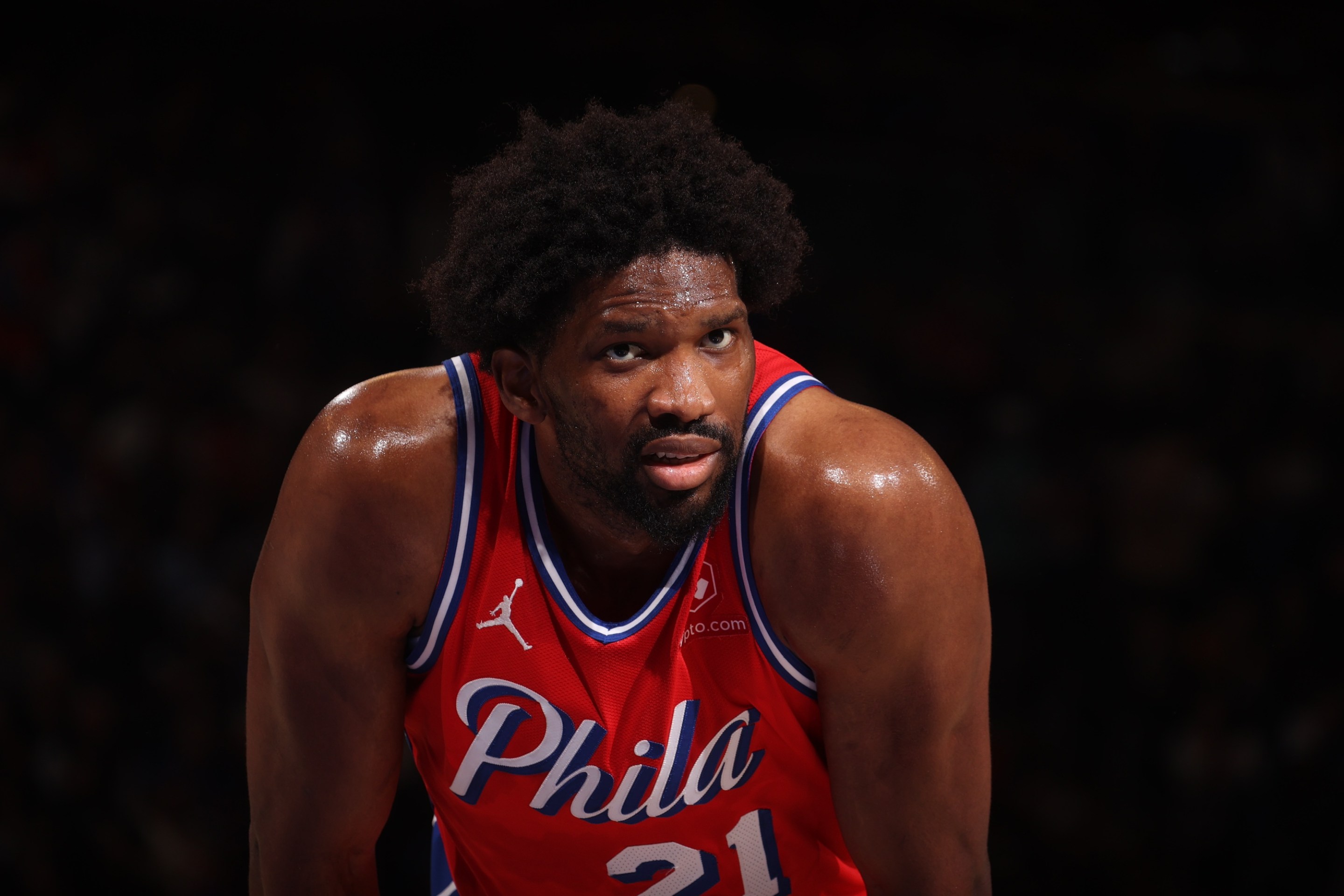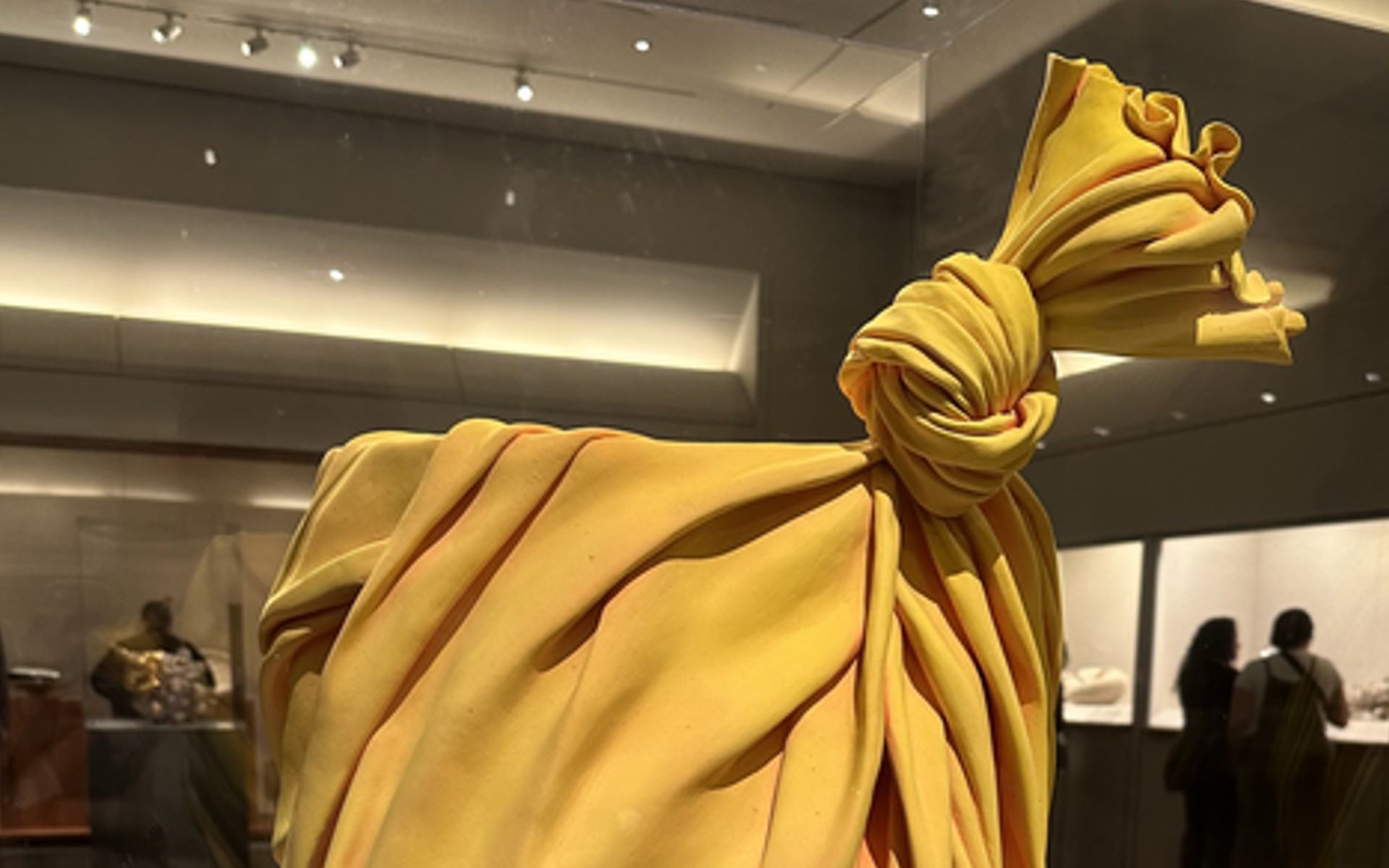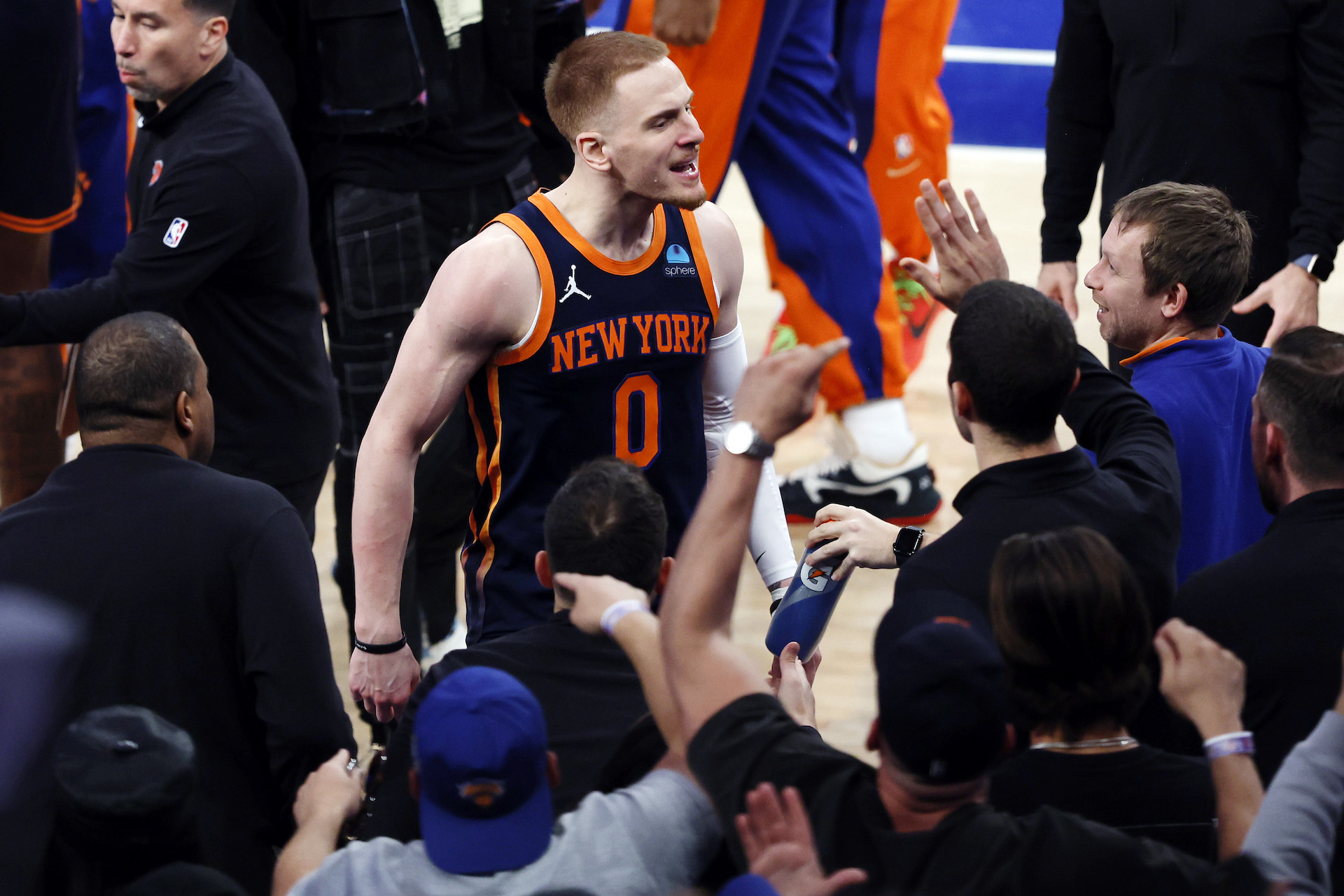Minor League Baseball Is Optimized To Exploit
2:00 PM EDT on September 8, 2021

He was on the cusp—not of realizing his dream, or anything so far off and life-changing as that, but at least of getting back to work on it. The right-handed pitcher, a 25-year-old in the organizational basement of an American League club’s Single-A roster, hadn’t taken the mound in a game since 2018, when he tore his ACL in late summer. A mid-recovery meniscus tear in the same knee robbed him of his entire 2019, and 2020 was a lost season for every minor-league striver, as the coronavirus pandemic wiped out both a year of development and their usual meager pay. He spent his time off substitute teaching and flipping Air Jordans online.
By the end of Spring Training 2021, Player 1, as we’ll call him, felt strong atop his rebuilt leg. Then, in his last bullpen session before the season got underway, his pitching coach told him to try an overhauled delivery—a complete inversion of his mechanics. A team can call this an experiment, but to a player, it is a risk. A few pitches into the 26-pitch session, Player 1 complained of soreness. “My coach said, ‘It’s obviously not gonna feel right, because you’re used to doing something else,’” he told me. Pitch 18, a curveball, brought pain in the forearm. Pitch 19, a fastball, sharpened it.
When I talked with Player 1 in mid-July, he was four months removed from Tommy John surgery. We had scheduled a call to discuss the near-daily revelations of player mistreatment in the low minor leagues. The pitcher told stories that are by now familiar, of life making far below minimum wage. He’d slept for whole seasons on air mattresses in overstuffed apartments; he’d subsisted on protein powder pocketed from the clubhouse. After sustaining injuries he attributed to over- and misuse, he waited months for medical appointments while top-tier prospects flew cross-country for next-day surgeries. He relayed his stories with the dreary obligation that characterizes the speech of the correct and hopeless, the way people fret over the rising global temperature. Describing the all-fronts effort to cut costs by big-league teams, he adopted phrasing that his bosses have long used as both explanation and justification: “That’s just the business aspect of it.”
The growing genre of articles concerned with the lot of the minor leaguer has lately been characterized by a coda of optimism re: “the business aspect of it.” It just makes sense, the reasoning goes, to do better by lower-tier prospects. More humane living conditions, healthier food—these investments, which are strikingly small on the scale of the billion-dollar budgets of big-league clubs, could pay off through creating potential big-league contributors out of what might otherwise be washouts. Basic decency might just be the next market inefficiency. But the ballplayers I spoke with know otherwise. The language of optimization, baseball’s official tongue, isn’t going to save them. It’s what got them here.
The modern-day minor leagues have their roots in the second decade of the 20th century, when Branch Rickey, then the president of the St. Louis Cardinals, established MLB’s first farm system. Rickey had surveyed the game’s landscape and seen rival teams succeeding not on the basis of scouting or developmental acumen but through the sheer brute force of money, and he became frustrated that his gift for spotting talent early didn’t carry much reward. By the time promising players were ready to phase out of baseball’s assorted minor leagues, which at the time were unaffiliated outfits whose employees could sign with the highest bidder, latent skill had usually manifested in on-field success. Whatever club had the funds to outspend the rest could scoop up the best of the crop, whether they’d discovered them years or weeks prior.
Rickey’s solution was to create ecosystems of exclusivity through stacked tiers of minor-league teams that, in exchange for financial support, would make their players available only to the Cardinals. He shined up his model with the rhetoric of fairness and competitive balance and even, once the Depression hit in earnest, generosity; the Cardinals’ funds kept clubs solvent in Fort Smith, Ark. and Syracuse, N.Y. But it was nearly impossible for even the system’s progenitor to call his brainchild anything but what it plainly was: American sports’ most drastic and audacious system of cost control to date, a means not of undercutting employee leverage but of effectively obliterating it. Minor leaguers, who were paid pittances and supplemented their athletic income with work as laborers or salesmen, would compete amongst and against themselves, motivated not by maximizing their income but by jostling for what had become the only way out. Eventually, as Rickey put it, a select few “ripened into money.”
A century-plus later, another Rickey-ism—“Out of quantity comes quality”—endures as the minor leagues’ implicit credo. Setting aside the tier of highly drafted prospects, whose reputations ensure doting developmental programs and whose signing bonuses insulate them from the worst ignominies of the minor league experience, the minors remain a volume business and numbers game. (Minor-leaguers are unprotected by the Major League Baseball Players Association. The NBA’s G-Leaguers, who unionized last year, are guaranteed $35,000, and their teams pay for housing.) Only one in 10 Single-A players ever plays a big-league inning, making per capita investment a sucker’s play relative to accumulating longshots and seeing who among them rises. Rickey’s methods have long since been codified; clubs pay Single-A, Double-A, and Triple-A players a respective $500, $600, and $700 a week (up from pre-pandemic rates of $290, $350, and $502—an improvement MLB deemed worth bragging about). The Minor League Uniform Player Contract locks prospects into seven years of team control with their organization. Spring training, a requirement, is unpaid aside from small housing and meal stipends; finding time to work outside baseball during the season is impossible. Control, not care, is the byword.
“It’s about grabbing as much potential talent as you can from other MLB owners,” says Katherine Walden, a Notre Dame professor and baseball labor historian who wrote her PhD thesis on the economic history of the minor leagues. “It’s not about making smart investments. It’s about reducing costs and maximizing future profits.”
In June, the watchdog organization Advocates for Minor Leaguers reported that some players on a Baltimore Orioles Double-A Affiliate were considering sleeping in their cars because they were unable to find affordable lodging. Shortly thereafter, O’s GM Mike Elias explained the situation as a simple breakdown in communication. “Our players did know and continue to know that we’re available to them should they have any types of hardships arise,” Elias told the Baltimore Sun. He added, “We would never allow a situation where someone is not safe.”
It is perhaps telling that the bar to clear, with respect to minor-league compensation, is avoiding imminent danger. Like those Orioles minor-leaguers, most of the players I spoke with had been in touch with the Advocates organization, and detailed difficulties that stopped just shy of a night without a bed. Player 1 described a year in Single-A less as a baseball season than as a perpetual search for basic necessities conducted around 10-plus-hour days, six days a week. “We just weren’t getting enough nutrition,” he said of the dinners his team provided after strength training, team workouts, pregame prep, and the night’s contest had wrapped up. “We got one scoop of pasta, one piece of chicken, and a little bit of whatever veggie.” The team’s strength coach suggested that the players mobilize their meager clout to request samples from supplement suppliers. “Unless you’re a first-, second-, third-rounder, it’s only like a 50 percent success rate of even getting something,” Player 1 said.
Player 1 and his teammates were able to work out a deal for discounted chicken fingers and burgers with the owner of a local restaurant, a sympathetic fan of the team. “He knew our circumstances, so he gave us our own menu. We paid three dollars for a meal, basically,” the player said. “He gave it to us pretty nicely, but that was only some days—and not when we were away on road trips.”
Swapping out fair pay for fan generosity has other pitfalls. A left-handed pitcher with eight years of minor-league time recalled the first week of a Single-A season in 2015, when players matched up with host families. “People speak about host families endearingly, which is bullshit—they don’t pay us enough to get our own place,” Player 2 said. The vetting process is predictably minimal. That first year, Player 2 and a handful of teammates lived with what he described as an “obsessive superfan,” in a home crammed with knickknacks from the big-league club and its various affiliates. The players snuck through the house during those hours if they couldn’t avoid it altogether. “He’d come knock on our doors and want to talk to us, and you’d have to sign shit. You’d have to sign baseball cards and bobbleheads—all this guy’s basement was absolutely decked out in every piece of memorabilia that you can find,” Player 2 said. “It was scary, honestly. We just wanted a place to sleep, and you kind of had to indulge him because you’re staying at his house. You’ve got nowhere else to live.”
Player 2 pitched for months through abdominal pain; his ERA, which had sat in the mid-threes the year prior, swelled to nearly five. Near the season’s end, he received a diagnosis: stress-induced stomach ulcers.
The greatest impediment to most any major-league hopeful, setting aside the penciled-in prospects fast-tracked for advancement, is the grinding reality of minor-league life. Over offseasons—during which minor-leaguers aren’t paid even their scant in-season wages but are nevertheless expected to build muscle and maintain conditioning—players allocate their risk, either racking up debt to invest in and protect their bodies or forgoing a pro athlete’s best practices to stay afloat financially. “Some guys get retail jobs; some guys do lessons,” said one pitcher, a Triple-A prospect with a National League club who pursued a master’s degree in business analytics in college. “And then some guys don’t work and they just train and go into debt. I know a guy that was in a decent amount of debt. He was like, ‘My goal is to make it to the big leagues, and I’m gonna do everything I can to do that.’ Luckily, it worked out for him—he’s playing in Japan.”
Player 3 was more of a pragmatist, and set benchmarks early in his minor-league career that, if unmet, would mean it was time to get a “real job.” Last winter, wanting to pocket some cash and still keep in shape over the offseason, he played in the Dominican Republic, figuring it preferable to working a sales floor and cramming in training sessions during off-hours. But the workload caught up with him, landing him on the injured list for more than a month this season. “I pitched from mid-November until the second week of January,” he said, “and so I only had three weeks to get ready for spring training, and my body just wasn’t ready. I didn’t have the proper time to build back the strength I lost during the season.”
An industry that compensates workers primarily with opportunity might reasonably be expected to be well-stocked with mentors, advisors, and confidants. But players describe an atmosphere of rampant distrust, in which the objectives of the club—and those of its position coaches, managers, GMs, and trainers—run counter to those of its employees.
“The relationships are fake, they’re a stepping stone,” said Player 1 who blames his coaches for the unbidden technical adjustments behind his torn UCL. “If [a coach] can turn one player into a Dude, he shines and makes his way up. He gets a promotion.” Nobody much cares how many players run through that coach’s trial-and-error on the way there, or what happens to them when a prescribed regimen ends in injury. Player 1 recalled his first knee surgery, after months of pain in his leg without the team so much as springing for an MRI. “When I woke up, my parents were there, and the doctor goes, ‘Why didn’t he come in sooner?’ I messed it up even more than I already had. I didn’t want to burn any bridges, so I bit my tongue.” He again stayed quiet when some medical expenses slipped past worker’s comp claims, figuring it better to carry the cost himself than be seen as a nuisance.
The players who spoke to me universally mentioned at least some fear of retribution from their organizations; some rescheduled phone calls to be sure to avoid being overheard. In a system run on subjective appraisal, minor-leaguers fear that any show of dissent could mark the end of their hopes for promotion. “Our trainer always tells us, ‘You may think we don’t know everything, but we do,’” Player 1 said. “It just leaves everyone a little on edge.” He described a conversation he’d had with a player on another team that veered into boilerplate athlete griping—nothing scandalous, playing time and the like. The trainer asked what he’d been doing discussing such things outside the organization. “I don’t know how he heard it or where he heard it from,” Player 1 said. “I have no idea how it got passed on.”
On those occasions when players air their grievances directly, the repercussions can be calamitous. Harry Marino, an attorney and former Diamondbacks and Orioles farmhand and the executive director of Advocates for Minor Leaguers, described a common pattern in the minors. A player asks for a release; the team denies it and, in an act that’s hard to read as anything other than retribution, places that player on the restricted list. “That means no other team can sign you for the length of the contract,” Marino said, “so you’re not active with the team that you don’t want to play for anymore, but they also won’t let you go and play with anyone else.”
The various miseries of minor-league life—the pay, pain, and paranoia—descend from an ideology shared by backwards and purportedly forward-thinking teams alike. A fifth-year catcher with an organization known for its farm-system shrewdness described life in the far reaches of that system as baseball purgatory—a place where prospects are held back to sometimes extreme degrees, all to protect a veneer of upside that might be sullied if they progressed to face better competition. If the job of the minor leagues were simply to create major-leaguer ballplayers, that would be an absurd measure; in the context of a system that uses players as data points in a cost-controlling and revenue-generating algorithm, it is canny. Player 4 repeated his standard welcome to new teammates: “Sorry you got drafted by us, dude. You’re not going anywhere.”
The presence of Advocates for Minor Leaguers, players said, has helped matters. At least five major league teams have begun providing their prospects in-season housing stipends, and five have also agreed to provide back pay to minor-leaguers who stayed in extended spring training instead of heading to an affiliate out of camp—a windfall of more than $3,000. More broadly, teams know that severe enough dereliction of their responsibilities to players could now result in bad press. But case-by-case outcries solve only so much. “The advocacy group is so far behind,” Player 1 said. “It’s like a tug of war; we have so little traction. More and more people are jumping in to help us gain that traction, but the business side of things is still holding strong.”
When I asked players what changes they’d like to see, they all stopped short of calling for the kind of basic compensation and protection that covers full-time workers in every industry not granted antitrust exemptions by the United States government. I sensed that they considered such hopes fanciful to the point of impossibility. Player 3 saw the core problem as one of control; he wished the standard minor-league contract were shorter. Player 4 wanted year-round pay, “something modest, even 24 grand a year.” Player 2 fixated on housing, noting that major-league clubs have promotional deals with hotel chains. “There should be an option for players to stay in those hotels free,” he said. “If they want to get an apartment somewhere else, fine.”
Walden predicts piecemeal top-down changes designed to stem the tide of food- and shelter-related exposés while dodging any kind of honest economic reckoning, at least in the immediate future. “It’s a very smart PR move to not actually give people what they’re asking for, but give them something so that it looks like you’re making a gesture,” Walden said. “Major League Baseball has a long history of taking these half-measures as a preemptive way to avoid regulation or oversight … With steroids, MLB trotted out Mark McGwire and Sammy Sosa to testify before Congress and [said], ‘Don’t worry, we’re going to preemptively regulate ourselves, so that the legal structures we have in place to regulate business don’t have to step in.’”
Marino’s ultimate goal, though, is a ground-up reworking of minor-league compensation, via either the unionization of players or the revocation of MLB’s antitrust exemption. In the Supreme Court’s June ruling that NCAA institutions violated antitrust law in withholding benefits from players, the justices cited a brief submitted by the Advocates calling attention to similar dynamics in baseball. “The ultimate goal here is for one of those two outcomes to come to fruition down the line,” Marino told me. In this context, incremental gains hold dual value, improving current conditions at the margins while building public support. “We’re drawing attention to the issue, which is both what’s likely to get legislators more engaged and is also likely to show players that it’s worth it for them to speak up, work together, and get themselves a seat at the table.”
At this point, though, even the most substantive fixes offered by teams fall short. They mitigate minor-league mistreatment to the point of public palatability. They don’t address why someone working sixty hours a week can’t afford a place of his own to begin with, or why a player who trains and hurts himself on a team’s behalf is considered less a current employee—and responsibility—than a potential future one. At one point in our conversation, Player 1’s resigned tone tipped into outright exasperation. He did a job that needed doing, he reasoned, whether or not he ever pitched a single MLB inning—a job his bosses have convinced themselves isn’t one. “You can go and scrub toilets and get paid three times what we’re getting paid here.”
If you liked this blog, please share it! Your referrals help Defector reach new readers, and those new readers always get a few free blogs before encountering our paywall.
Stay in touch
Sign up for our free newsletter




